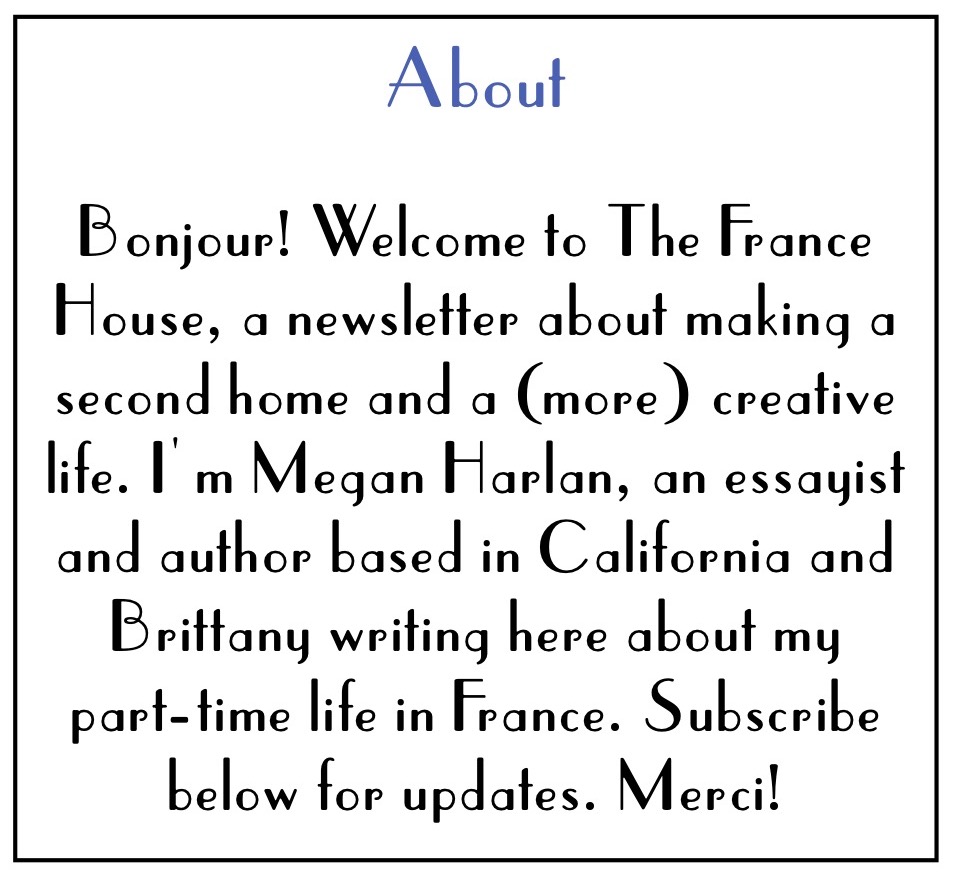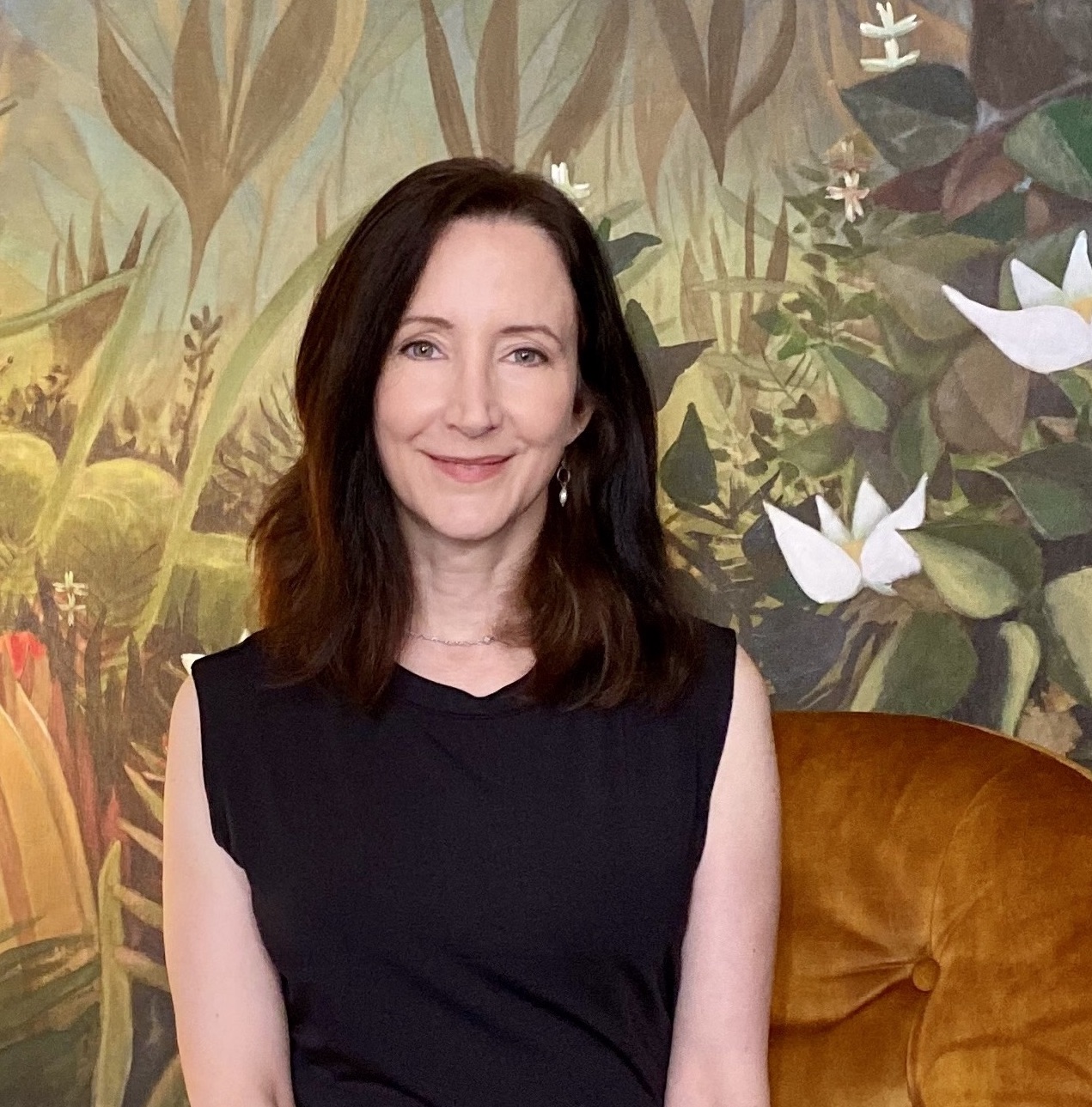On naming and valuing a good quality of life.
By Megan Harlan
I live in one of the most expensive parts of the world, the San Francisco Bay Area. Here’s a little anecdote: Back during my French real estate website addiction phase, a 900-square-foot wood bungalow in my cute, walkable part of town where we’ve owned our house for many years was listed for the same price as…a Norman castle. An actual, literal castle with turrets, a soaring dining hall, parkland, fruit tree orchards, and fishing pond. I told my partner. We looked closely the local bungalow listing; the place needed some work, as in probably a total gut. We viewed the French castle photos: lovely carved stone fireplaces in so many rooms, tall arched windows overlooking lush private woodlands—and even some utilities purportedly updated.
Granted, people who can afford to buy a house in the inner Bay Area work at jobs that pay a lot more than whatever the average income is in rural Normandy. As long as that’s true, the 900-square-foot Bay Area bungalow will probably hold its value; apparently the Norman castle has not over the years, relatively speaking. But it also tells us this: Only a tiny percentage of Bay Area people get to enjoy a certain quality of life as homeowners. And these people are no longer in the “middle class,” but somewhere near or in the upper income echelons, no matter what they’ll cop to. If the Bay Area’s version of a French castle fit for a Queen is a cabin-style bungalow riddled with dry rot, then I’d say the quality of life here has gone downhill for everyone.
No topic related to wealth disparities in California has received more hand-wringing than the affordable housing shortage—by politicians, journalists, and residents alike. But the issue isn’t just a housing deficit. Millions of new “housing units” are mandated to be built in the next decade, and I fear they won’t solve the larger, more intractable problem facing California and high-priced places like it.
The problem is that we have a quality of life shortage.

a house in Dinan’s center
I got my master’s degree in creative writing, not economics. I may be the only poet in America who enjoys math, which is perhaps even more reason not to trust my insights. So I will keep them brief: I enjoy a nice life in California, but I’m also deeply disturbed by how many people are struggling. That it takes so much more to pay for less—smaller quantity of lower quality—has been a steady trend since my 1970s and ’80s childhood, in overdrive the past fifteen years, and widely reported by journalists who’ve spent their careers covering these issues.
Probably the clearest way to see this fact is to leave the United States. Spending time in Dinan—and Brittany more generally, and much of France beyond that, and no doubt in many other places—is enlightening for how it can reset your expectations of cost, value, and quality of life. Switching from “vacation mode” to “what would a veterinarian charge for an emergency surgery around here?” sorts of inquiries can be very illuminating. (Answer: In Brittany, no more than 10% of what my cat vet in California would charge.)
As Oscar Wilde once wrote: “A cynic is someone who knows the cost of everything and the value of nothing.” To define what we value, and to follow it—that became a critical guide for my partner and me while pondering our second home. Even if we are (knock wood) doing just fine, California’s quality of life seems wildly off-kilter given its cost—which negatively effects everyone who lives here, in ways both obvious and subtle. Average-income residents in rich, developed places like the Bay Area should be able to live comfortable, dignified lives without breaking any banks, never mind being occasionally terrorized by medical, car mechanic, veterinarian, day care, or other inevitable costs. At this point, I have absolutely no idea how to fix these problems. Over the two decades I’ve lived in California as an adult, the more these issues have been studied, debated, and had tax bonds passed to fix them, they’ve somehow only gotten worse. It’s all just a little confusing.
No place is perfect, bien sûr. But when a young bistro server in Dinan stopped to chat with me—after bringing the bill and learning my family is new to town—about the good “quality of life” there, it’s enough to get my attention.

a little restaurant in Dinan
What constitutes a good quality of life is in some ways highly subjective, of course: Not everyone would put up with Brittany’s “Irish weather,” where three or four seasons may appear in a single day, for example. But objective economic components to Dinan’s pleasant lifestyle exist, and being hopelessly American, I found myself analyzing them: high-quality yet affordable food, housing, healthcare, and public transit are all clearly in place. But what impressed me even more is so much harder to measure, namely its social and societal components: A shared value system that supports these economic realities.
Equally hard to measure: How aesthetics shape quality of life. Having the visceral daily experience of charm, or beauty, or just cool style washing over you—no matter what you’re doing—is a powerful force, or at least it is for me. Dinan’s lucky heritage of protected half-timbered buildings high on a hill ringed by 13th century ramparts, with leafy cobble-stoned streets stretching down to a wide green river and lovely old port, makes walking nearly anywhere a sensory pleasure. As does that most classic French experience, running little food errands: stopping in the bakeries for Breton specialties packed with local butter and salted caramel, those quintessential regional flavors; or wandering through Les Halles, the window-and-wrought iron covered market, to buy a fresh, buttery cambembert cheese, and then sitting down for a glass at the inviting little wine bar; or shopping at the Thursday farmer’s market for produce that’s all organic and taking a minute to admire the beautiful shells of fresh scallops—caught that morning.

Kouign-amann: butter, salted caramel, and puff pastry cakes—a Breton specialty

Coquilles Saint-Jacques, aka great scallops
Like many places in France, Dinan’s firmly rooted “quality of life” engenders a baseline confidence in its residents that disaster probably isn’t looming around every corner—not for them, not for their neighbors, or even the strangers they see in town (while, tragically, America seems to more and more resemble a post-modern Wild West stocked with AK-47s). And yes, the longer we are part-time residents ourselves instead of vacationers, we may start to see it all differently, even uncover a “dark side” currently eluding us. I will always be honest here about what I learn; a writer is only as good as she is authentic to her subject.
For now, I’ll answer here: Do I occasionally still browse online property listings for French castles? Yes, every once in a while, I do—along with manors, tiny cottages, or Parisian flats. It’s an interesting exercise in proportion, values, and answering these questions: How do you really want to live—and at what cost?

[Header photo credit: “Panorama Saint-Suzanne” by JP Mortveille, with Creative Commons attribution linked here. All other photos credited to the author.]








